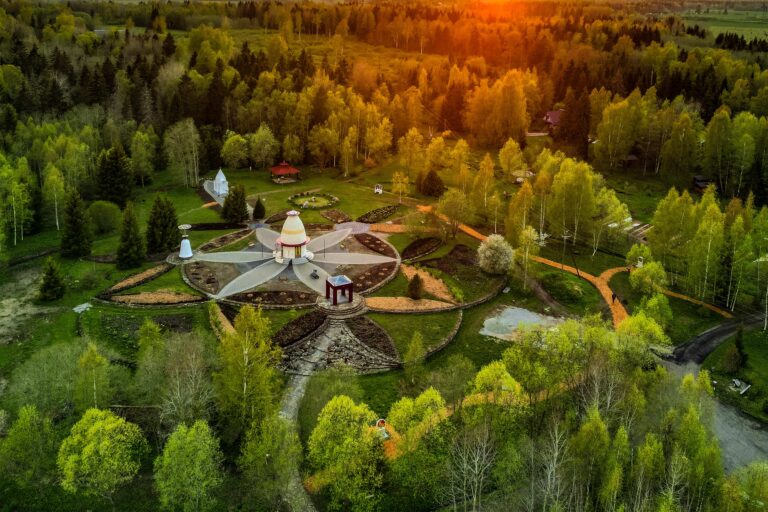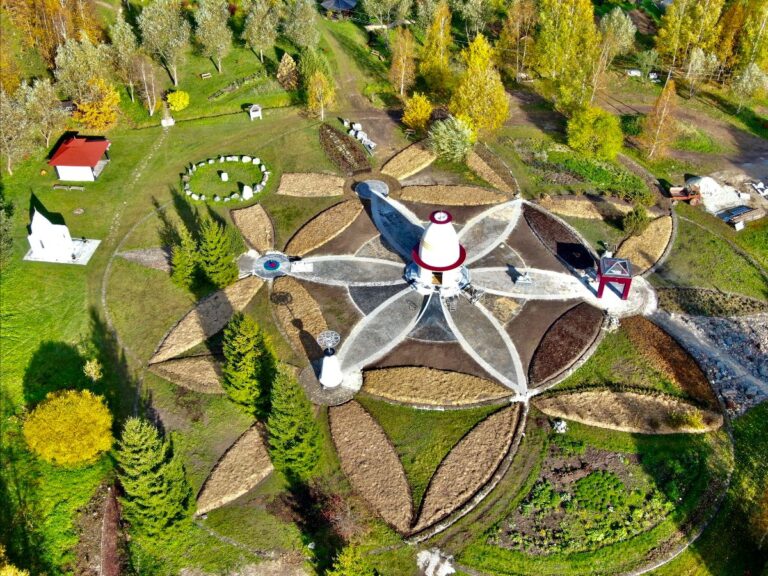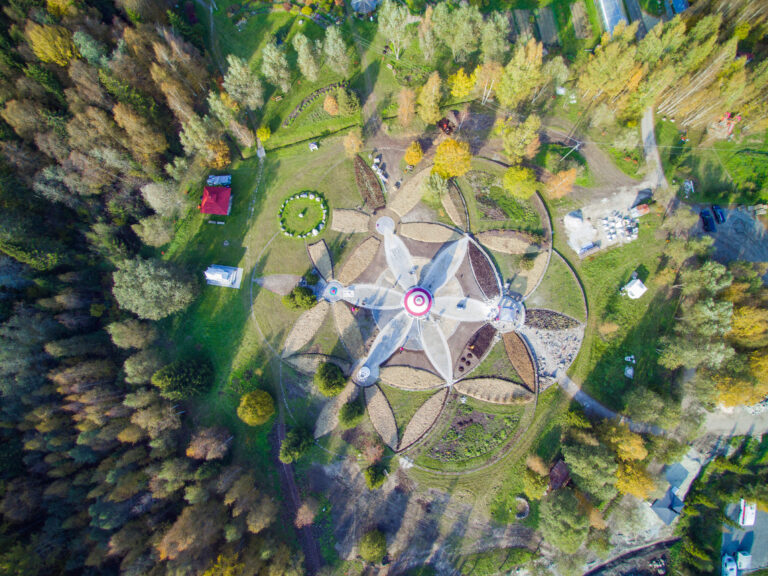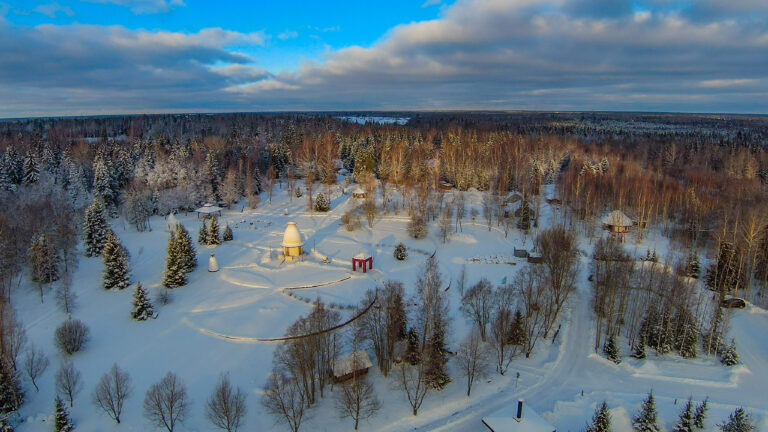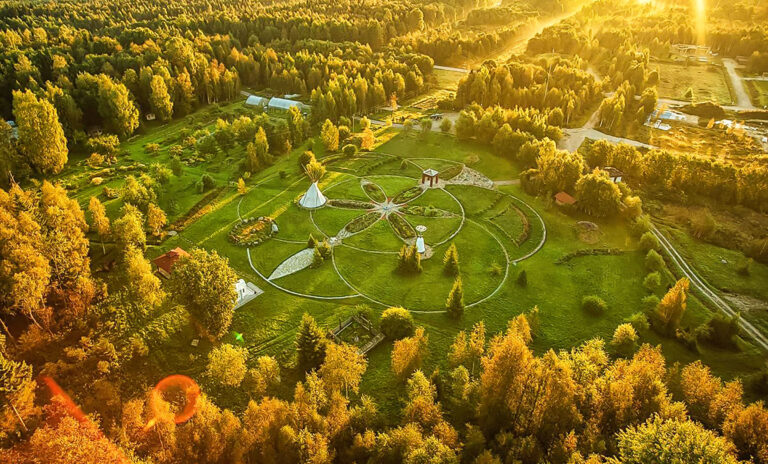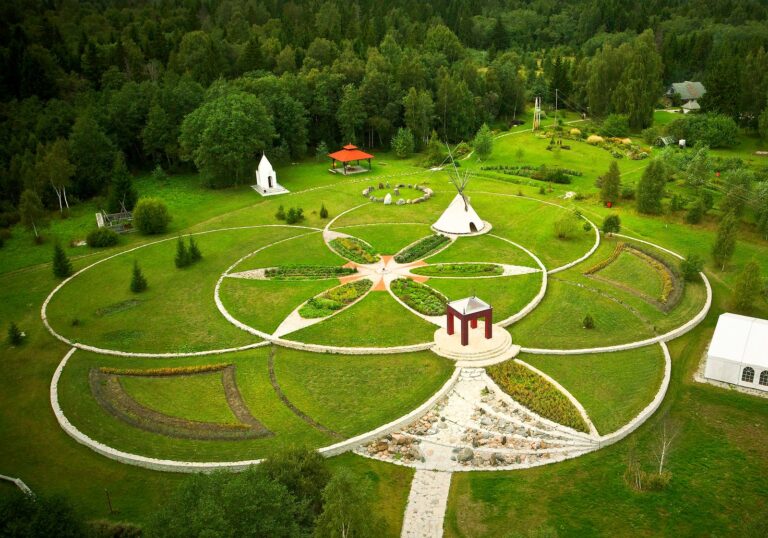The geometric design of the Flower of Life is known in many ancient cultures.
The construction of the pattern on the landscape began in 2004 under the direction of Lilleoru’s chief architect, Ain Padrik, and it is known to be the largest such geometric structure in the world. The soil was raised in steps, and the pattern was bordered with limestone contours. Different medicinal plants were planted in the “petals” of the Flower of Life. The power spots that were already present fit perfectly into the whole. The area of the Shiva temple is located on the Flower of Life pattern, with the main temple at the heart of the geometric pattern.
The Flower of Life pattern is a fascinating example of sacred geometry used to visually express the complex laws of nature. In geometry class, we might have learned how to draw this pattern by placing the sharp point of the compass on the edge of a circle and drawing another circle from there, creating a harmonious and regular floral motif. The Flower of Life design reflects relationships and proportions found in nature, ranging from the microscopic level of cells to cosmic dimensions.
The Shiva temple and sanctuaries on the Flower of Life pattern have a unique impact and purpose, which can be learned and experienced, supported by the harmonious effect of the Flower of Life’s geometric pattern.
